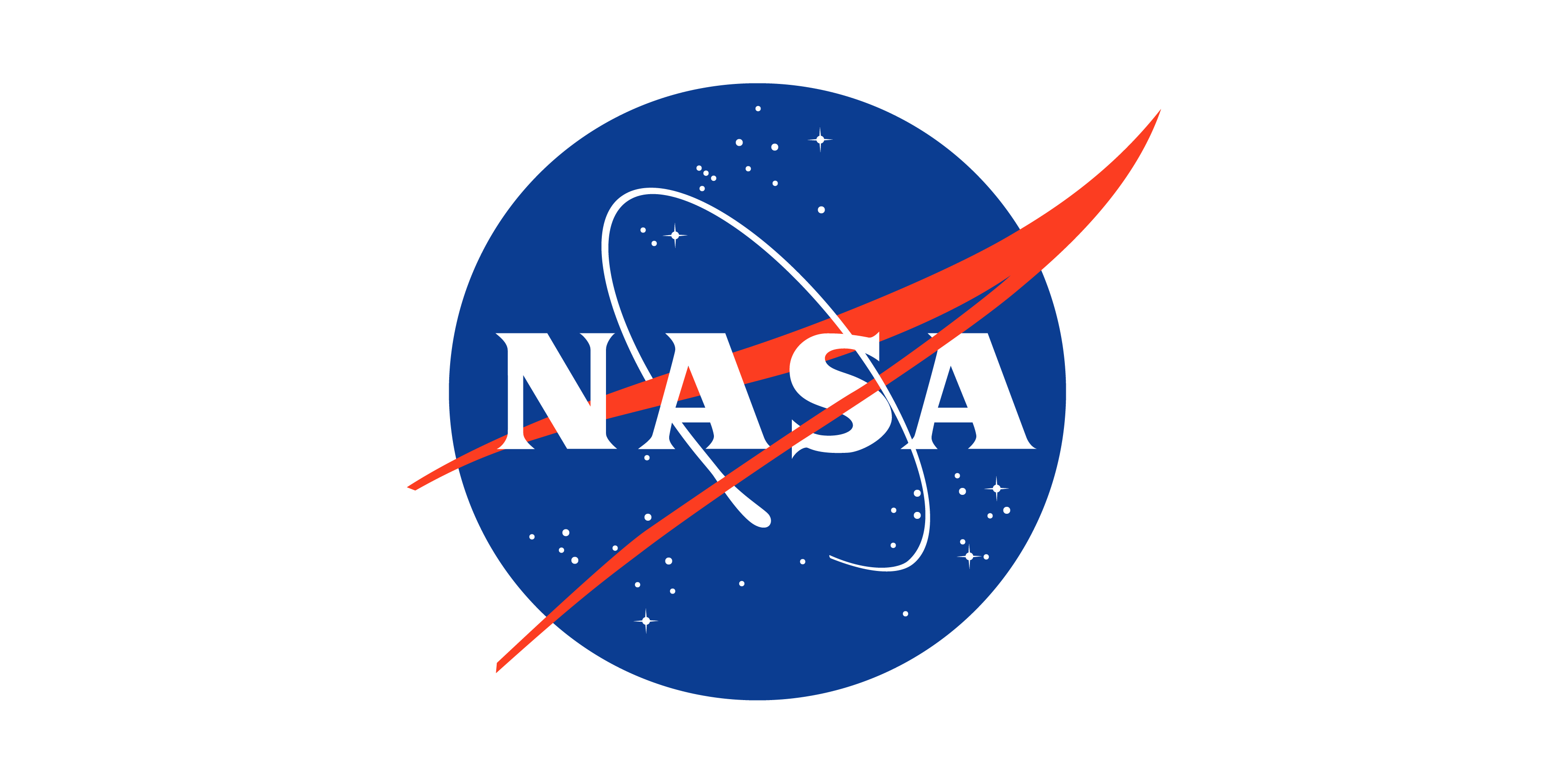- Blog
- Site
- Page
- « Pangeo Data Catalog
- Publications »
A range of funding agencies, academic institutions, companies, and individuals contribute to Pangeo in different ways.
We are grateful to have formal funding support from several funding agencies.

Pangeo currently receives support from the US NSF EarthCube Program, which funds cyberinfrastructure projects related to Earth Science. This award supports scientists and developers at Lamont Doherty Earth Observatory, National Center for Atmospheric Research, and Anaconda Inc. The public details of the awards can be found on the NSF website:
Anaconda is funded via a subaward through Columbia. We were awarded $1.2M over a three year period (Oct. 2017 - Sept. 2020).
The specific solicitation we responded to is here. Our project is technically called an “EarthCube integration.” This type of project requires a close link to “Geoscience Use Cases,” i.e. actual science applications. The need to closely intertwine the technical development and the scientific applications determined the structure of our proposal and the makeup of the team.
The proposal Project Description, entitled Pangeo: An Open Source Big Data Climate Science Platform is published under a CC BY 4.0 license on Figshare:
You may share and adapt this document as you wish, but please acknowledge the authors.

Pangeo receives support from the NASA ACCESS Program, which funds projects that enhance, extend, and improve existing components of NASA’s distributed and heterogeneous data and information systems infrastructure. This award supports scientists and engineers at the University of Washington (UW), the National Center for Atmospheric Research (NCAR), Anaconda Inc., and Element 84. The public details of the awards will be published when NASA makes them available. In total, we were awarded $1.5M over a two year period (Sept. 2018 - Aug. 2020).
The specific solicitation we responded to is here.
The project’s focus will be on the development of new data discovery tools and processing of remote sensing datasets.

Early work on Pangeo was partly supported via the Alfred P. Sloan foundation, via a Sloan Research Fellowship in Ocean Sciences awarded to Ryan Abernathey in 2016.
These institutions devote significant resources to the Pangeo project. We are always looking to expand this list.

LDEO is a primary recipient of the EarthCube award. Several scientists and programmers at LDEO are active in the development of Pangeo architecture and scientific use cases.

NCAR is a primary recipient of the EarthCube and ACCESS awards. NCAR scientists and programmers are leading the deployment of Pangeo on NCAR’s high-performance computing systems and conducting scientific investigations using Pangeo tools.

Anaconda (formerly Continuum Analytics) receives support from the EarthCube and ACCESS awards. Anaconda developers are contributing to the development of xarray, dask, and the Pangeo cloud infrastructure.

Developers at the UK Met Office Informatics Lab are contributing to the Pangeo cloud infrastructure.

UW is a primary recipient of the ACCESS award. Scientists and programmers at UW are active in the development of Pangeo cloud architecture and scientific applications.
Element 84 is a primary recipient of the ACCESS award. Element84 developers are contributing to the development of data-discovery tools in the Pangeo ecosystem.
These individuals identify themselves as contributors to Pangeo. Don’t hesitate to ADD YOURSELF to the list.
| Lamont-Doherty Earth Observatory physical oceanography climate |
| University of Washington alpine hydrology geospatial mapping remote sensing |
| National Center for Atmospheric Research distributed computing climate software |
| Univesrsity of Miami ocean wave modelling subseasonal forecasting |
| U.S. Geological Survey hydrology information modeling cyberinfrastructure geoinformatics |
| University of Colorado Boulder ocean biogeochemistry climate visualization decadal prediction |
| CSIRO/University of Western Australia physical oceanography coastal ocean modelling image analysis particle imaging velocimetry |
| University of Washington atmospheric science machine learning |
| University of Oslo climate snow hydrology energy transport cryosphere-aerosol remote sensing |
| University of Miami climate modeling physical oceanography |
| Princeton University atmospheric science climate |
| Moss Landing Marine Labs physical oceanography coasts and estuaries observations numerical modeling teaching |
| Lamont-Doherty Earth Observatory marine geophysics image analysis seafloor instrumentation |
| Institute for Marine and Atmospheric research Utrecht, Utrecht University, Netherlands ocean numerical modelling Lagrangian modelling particle tracking finite element methods |
| ICAS, University of Leeds numerical modelling atmospheric dynamics cloud computing |
| Massachusetts Institute of Technology physical oceanography |
| CNES, French space agency distributed computing data engineering and analysis HPC cloud computing infrastructure IT architecture |
| University of Washington remote sensing sensor networks data visualization cloud computing embedded hardware education and public outreach |
| National Center for Atmospheric Research climate hydrology water resources distributed computing |
| National Center for Atmospheric Research climate hydrology water resources |
| Australian National University/Centre of Excellence for Climate Extremes HPC ocean modelling |
| University of Washington remote sensing active tectonics geodesy |
| Lamont-Doherty Earth Observatory atmospheric modeling research computing |
| Texas A&M University physical oceanography coastal ocean modeling |
| UCLA Dept. of Atmospheric & Oceanic Sciences, and Caltech Division of Geological & Planetary Sciences atmospheric dynamics climate |
| Massachusetts Institute of Technology ocean modeling hpc research computing cyberinfrastructure |
| software algorithms |
| CSIRO physical oceanography climate software carpentry |
| University of Maryland - Baltimore County climate distributed computing water resources cloud computing |
| National Center for Atmospheric Research climate distributed computing algorithms remote sensing |
| University of Colorado-Boulder / NOAA Global Systems Division HPC climate software GIS |
| NCAS, University of Reading climate simulation hpc data infrastructure cloud computing |
| Institut des Géosciences de l’Environnement physical oceanography ocean models climate |
| Lamont-Doherty Earth Observatory hydrology |
| Institut des Géosciences de l’Environnement machine learning computer vision |
| University of Innsbruck climate glaciology |
| University Corporation for Atmospheric Research/Unidata atmospheric science remote sensing algorithms |
| University of Washington Department of Atmospheric Sciences atmospheric science climate |
| Stockholm University climate atmospheric science modeling |
| CSIRO physical oceanography |
| Memorial University of Newfoundland physical oceanography |
| University of Washington climate hydrology water resources |
| Columbia University physical oceanography climate |
| National Center for Atmospheric Research climate distributed computing algorithms |
| Met Office Informatics Lab atmospheric science distributed computing algorithms |
| GEOMAR Helmholtz Centre for Ocean Research Kiel physical oceanography distributed computing ocean-data management HPC |
| Columbia University climate atmospheric science modeling |
| Met Office Informatics Lab atmospheric science distributed computing cloud computing HPC |
| Anaconda Inc distributed computing algorithms |
| University at Albany climate atmospheric science physical oceanography modeling |
| Massachusetts Institute of Technology climate meteorology policy |
| array storage engines scientific computing infrastructure |
| USGS physical oceanography coastal ocean modeling geoinformatics |
| Massachusetts Insitute of Technology statistics modeling/HPC physical oceanography |
| CSIRO climate atmospheric science |
| Laboratoire d'Étude en Géophysique et Océanographie Spatiale physical oceanography climate |
| University of Washington cloud computing containers water resources |
| Met Office Informatics Lab atmospheric science distributed computing kubernetes docker cloud computing infrastructure IT architecture |
| Institute for Marine and Atmospheric research Utrecht, Utrecht University, Netherlands physical oceanography climate software |
| University of Toronto paleoclimate HPC physical oceanography |
| University of Maryland - Baltimore County climate informatics distributed computing cloud computing big data |
| University of Oxford atmospheric physics numerical modelling observations data fusion machine learning |
| University of Saskatchewan hydrology atmospheric science |
| NOAA cloud computing open data climate atmospheric science oceanography geology |
| Los Alamos National Laboratory physical oceanography modeling climate |
| University of Illinois at Urbana-Champaign (UIUC) atmospheric aerosols urban environment machine learning HPC |
| Harvard University atmospheric chemistry numerical methods HPC |